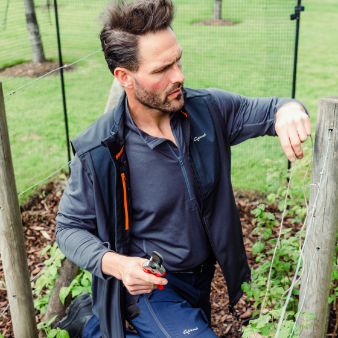Q&A with hellebore expert, Kevin Belcher, of Ashwood Nursery

Can you give us an overview of the different species of hellebores?
Helleborus x hybridus are more showy and colourful than most of the species. H. niger, the traditional Christmas rose, makes a great winter display in pots along with H. argutifolius and x sternii used for their decorative foliage. H. foetidus is a super plant with small green flowers on tall stalks that will grow in tricky dry spots.
Are there any hellebores that you can particularly recommend?
Ashwood Garden Hybrids Evolution Group, especially golden yellows, Sunset Shades and Neons, which we exhibited at Chelsea in 2018. Their main characteristics are outward facing flowers on short pedicles and bright, long lasting colour on the inside and reverse. We also breed for strength and vigour.
What conditions do hellebores most like?
Hellebores are woodland plants and it’s best to mimic their natural habitat by siting them in a dappled, shady position, ideally under deciduous trees and shrubs, so that they get all available winter sun and summer shade. Plenty of humus and good drainage are both necessary but must be kept well-watered during dry spells in summer.
Do you have any tips for hellebores that don’t flower?
They can sulk after being divided. Feed with a high potash liquid fertiliser in summer to boost your established plants to form their flower buds. Keep an eye out for the usual pests such as slugs and snails that can nibble the flower buds and aphids in late spring and summer that like the lush green foliage. Otherwise they are pretty trouble free.
What about any maintenance tips?
Most gardeners cut off the old foliage after Christmas to allow new flowers to emerge and to remove any overwintering pests lurking in the old, tatty leaves. In autumn, giving hellebores an annual mulch of homemade garden compost and bonemeal is always beneficial, ensuring that their crowns aren’t buried.
What are the nicest combinations?
In late winter, there’s nothing nicer than a simple combination of Helleborus x hybridus with snowdrops and cyclamen coum. They are completely hardy and fall flat to the ground when temperatures are freezing but soon raise their heads again as the morning sun emerges and daytime temperatures begin to rise.







